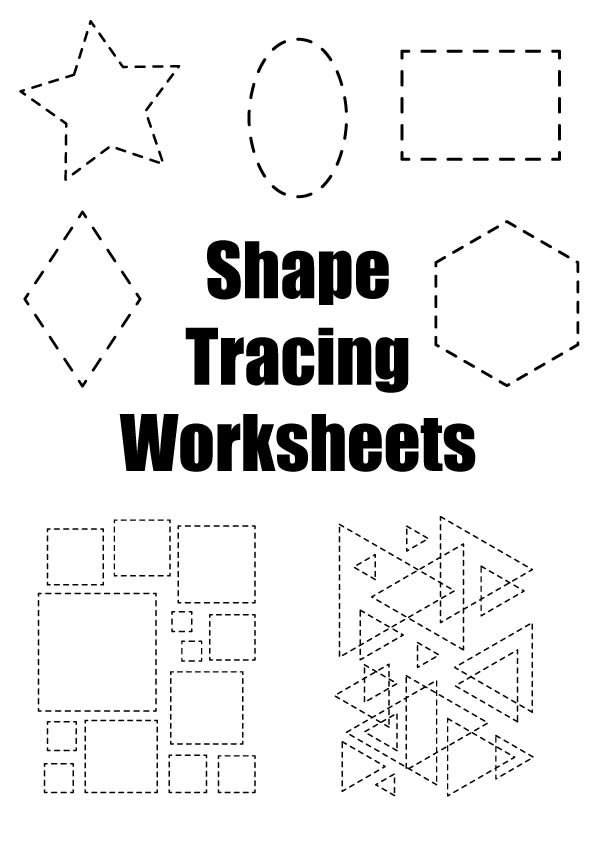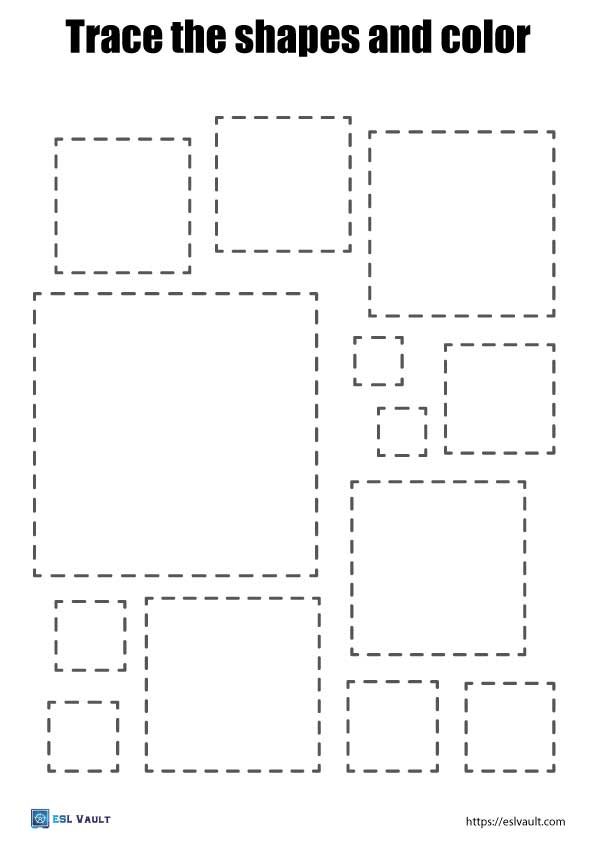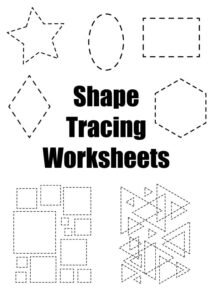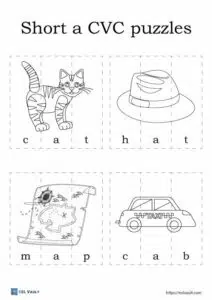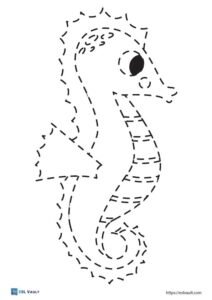Shape tracing worksheets
Here you have some simple shape tracing worksheets for children. They can help young learners with many things such as practicing fine motor skills, recognizing shapes, and learning shape names.
These pages all have 2D shapes with lightly colored lines that learners are to draw over with a darker pen, pencil, or crayon. This helps children learn how to follow patterns. Once this has been done they can be used for coloring, to teach colors, and even for counting. Ask learners to count how many of each shape are on the page they are using.
The first worksheets below have the simple shapes of circles, triangles, squares, stars, and hexagons. The sheets have different-sized shapes which helps keep them interesting. Further down the page you will find more printables that are suitable for children from kindergarten age through to primary school.
You can use these not only to help kids with their pencil-wielding ability but also for scissor practice. After tracing and or coloring, let learners cut out the shapes to build further coordination and hand strength.
Common shape tracing worksheets
The next few pages have multiple common shapes on them. They will help learners with shape recognition and learning the basic 2D shapes. Even If students are only practicing tracing, the variety of shapes will help keep them engaged.
The first printable below has 12 shapes to be traced with a hexagon, oval/ellipse, circle, parallelogram, octagon, square, trapezoid, star, rectangle, diamond, pentagon, and triangle.
After they have finished tracing, children can color the shapes. Most young learners won’t know all the shape names but you can number them and say “1 is red”, “2 is yellow” and so on to make this easier.
Another great way to help teach these shapes is by using the free shapes flashcards. You will find some more fun teaching ideas on that page!
Below, there are 2 pages with 6 shapes each on them, they use the same shapes as the printable above. These sheets require children to trace each shape four or five times. There is also a guide on the left for coloring afterward.
For young learners who are just starting out in the world of shapes, there are also the 72 shape matching game cards. These require learners to match shapes with everyday objects that they might see in the real world. They’re another fantastic activity for learning about this topic.
Fruit shape tracing worksheets
The 2 free shape tracing sheets below feature the unorthodox shapes of fruits. They are an interesting change from the basic 2D shapes in the pages above. There are 8 fruits on 2 pages with an orange, a pear, a lemon, an apple. grapes, a pineapple, a banana, and a watermelon slice.
The tracing lines overlap each other on these worksheets so learners can color in the smaller shapes to make the pages very colorful. Alternatively, they can just follow the guide to the left or color the fruits the way they think they should be.
Challenging shape tracing worksheets
Finally, there are some slightly more difficult shape tracing printables. These pages have shapes overlapping and inside each other. They are best suited for slightly older kids who enjoy a bit of a challenge.
There are a lot of lines on the pages to be traced so these sheets can take a bit of time to complete. If learners go ahead and fill them in with color afterward, they will be left with some wonderful pictures they can keep,
So far there are 3 of these shape tracing sheets to choose from with pages of squares, hexagons, and triangles.
Related activities
If you enjoyed the shape tracing worksheets and want further related activities, here are some more free resources that you can download.
Check out the free Tetris printables. There you will find Tetris shapes that kids can use to make their own creations as well as some puzzles.
Another thing for slightly older students is the printable tangram puzzles. You can print out the shape templates from there and let students use them as building blocks to create objects and animals

